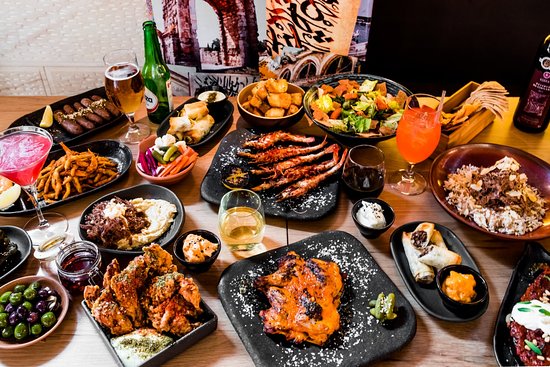Unlock the Joy of Cooking with Kids: Your Ultimate Guide to Cubby Kitchens
Welcome to the delightful world of cubby kitchens—a place where imagination sizzles, skills marinate, and little chefs are in the making! As a parent, you’re always looking for ways to combine fun with functional learning, and a cubby kitchen hits all the right notes. It’s an adventure-packed nook that will not just entertain your kiddos but also equip them with valuable life skills. Ready to whisk into the magic of cubby kitchens? Let’s get cooking!
What Is a Cubby Kitchen?
A cubby kitchen, dear parents, is a scaled-down, child-friendly version of a real kitchen designed to inspire young children to explore the art of cooking. It embodies the charm and utility of a regular kitchen while being perfectly sized for your little ones. In a cubby kitchen, children can mimic your cooking actions, learn about different ingredients, and understand the importance of kitchen safety, all while indulging in some serious fun.
Why a Cubby Kitchen Is a Must-Have for Young Learners
Introducing your child to a cubby kitchen isn’t just about making pretend meals or keeping them busy—it’s about laying the foundation for a lifetime of healthy living and learning. Here are a few irresistible reasons to welcome a cubby kitchen into your home:
- Nurturing Imagination: A cubby kitchen serves as an excellent prop for imaginative play, which is crucial for cognitive development.
- Developing Motor Skills: Playing with kitchen tools and pretending to cook help enhance fine motor skills and hand-eye coordination.
- Understanding Nutrition: It’s a great opportunity to introduce concepts of nutrition and the value of a balanced diet in a playful manner.
- Teaching Responsibility: Children can learn about cleaning up and maintaining their own space, instilling a sense of responsibility.
- Social Skills and Cooperation: Group play in a cubby kitchen encourages sharing, cooperation, and communication amongst peers.
Choosing the Perfect Cubby Kitchen for Your Child
Selecting the right cubby kitchen depends on several factors, such as space, budget, and your child’s interests. Do they dream of baking, or are they more fascinated by the sizzle of a pan? Here’s what to consider when shopping for a cubby kitchen:
- Size and Space: Measure the space where you’d like to set up the kitchen to ensure a perfect fit, keeping in mind room for play.
- Material: Look for durable materials that are easy to clean and maintain, such as wood or high-quality plastic.
- Safety: Opt for a cubby with rounded corners, stable construction, and non-toxic finishes.
- Accessories: A variety of accessories can enhance the play experience, but choose according to your child’s age and ability to handle small parts.
- Customization: Some kitchens allow for personal touches like color changes or additional modules.
There’s nothing quite like the twinkle in a child’s eye when they create something from scratch, even if it’s just a pretend pie or a make-believe sandwich. A cubby kitchen encourages that sparkle daily. And that’s just the beginning! As they grow, their cubby kitchen will evolve from a play area into a learning zone where math skills, science experiments, and even cultural exploration through cuisine can come to life.
No matter how you slice it, a cubby kitchen is a recipe for fun, growth, and learning. Stay tuned as we dive deeper into the world of cubby kitchens, with tips on how to incorporate educational play and how these charming play spaces can help in developing your child’s autonomy and decision-making skills. It’s time to stir up some joy and welcome these whimsical wonders into your home!

5 Things Parents Should Know in Preparing for a Cubby Kitchen
Before you introduce the whimsy of a cubby kitchen to your home, there are a few essential ingredients you’ll want to have on your checklist. Here are the five things every parent should know when preparing for this exciting addition:
1. Location, Location, Location!
Choose a spot in your home that is safe and convenient for setting up the cubby kitchen. Ensure it’s away from real kitchen hazards but close enough for you to supervise the play. Natural lighting and enough space for little ones to move around are important factors that will enhance the experience.
2. Think Long-Term Investment
While it might be tempting to go for the cheapest option, consider the longevity of the cubby kitchen. Investing in a quality piece can grow with your child and potentially serve future siblings or even the next generation of junior chefs!
3. Montessori Approach for Learning
Adopt principles from the Montessori method by choosing a cubby kitchen that promotes independence. Pick one that allows your kids to reach shelves and use equipment on their own, encouraging natural learning and autonomy.
4. Accessorize Wisely
Too many gadgets can overwhelm your little chef, while too few might stifle creativity. Strike the right balance with age-appropriate utensils, pots, pans, and play food. This keeps the cubby kitchen fresh and engaging while helping kids learn to organize and manage their tools.
5. Cleanliness and Upkeep
Instill good habits from the start with easy-to-clean surfaces and a designated place for every item in the cubby kitchen. Encourage your child to clean up after each cooking session to foster respect for their play space and a sense of responsibility.
Embracing these preparations will ensure your cubby kitchen is a well-loved feature in your home that supports your child’s imagination and development. With a little preparation and a lot of love, your child’s cubby kitchen will be the go-to spot for culinary adventures and skill-building fun!
Integrating Educational Play into Your Cubby Kitchen
Turning playtime into learning moments is a piece of cake with a cubby kitchen. Here are some creative ways to infuse education into the mix:
- Counting with Ingredients: Use play food items to teach counting and simple arithmetic during playtime.
- Color Matching Games: Ask your child to sort food items by color, enhancing their color recognition and sorting skills.
- Role-Playing Scenarios: Encourage scenarios where your child runs a restaurant or bakery, which can improve language and social skills.
- Recipe Creation: Let your child develop their own recipes with available play food, fostering creativity and sequencing skills.
As you blend these elements into your child’s playtime, you’re not just stirring up fun—you’re also helping them develop vital skills that they will carry with them as they grow. The cubby kitchen can be a wondrous catalyst for learning, offering a buffet of educational opportunities in the comfort of your own home.
Now that we’ve kneaded through the dough of preparation and educational play, you’re all set to bake the most of your cubby kitchen! Remember, the key ingredients are love, creativity, and a little bit of patience. Bon Appétit!
For more great articles please see here. For more information see here
Disclaimer
The articles available via our website provide general information only and we strongly urge readers to exercise caution and conduct their own thorough research and fact-checking. The information presented should not be taken as absolute truth, and, to the maximum extent permitted by law, we will not be held liable for any inaccuracies or errors in the content. It is essential for individuals to independently verify and validate the information before making any decisions or taking any actions based on the articles.




